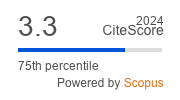Article | Open Access
Beyond the “Trans Fact”? Trans Representation in the Teen Series Euphoria: Complexity, Recognition, and Comfort
| Views: | 9885 | | | Downloads: | 7751 |
Abstract: Recent anti‐LGBTQ+ discourse has increased the threat of violence against people who do not follow the cisheteronormative mandates. To face these dialectics, the media can offer alternative discourses, in particular by providing realistic and non‐stereotyped LGBTQ+ representations. Media portrayals can be seen as both positive and negative. On one hand, they may offer stereotypical and narrow representations, but on the other, they can include representations that can become aspirational models and improve visibility. The objective of this article is to explore this second perspective by analyzing the representation of Jules, a trans female character from the American series Euphoria (Levinson et al., 2019–present). To this end, we conducted a close reading analysis (Castelló, 2008) of the first season of the series. The results show three axes of representation that move away from the traditional portrayal of trans characters: (a) a narrative that moves beyond the “trans fact” and presents complex and plural stories, (b) a representation of the trans individual as an element of value and love, away from fetishism, and (c) a link between the trans realm and specific spaces of comfort and freedom.
Keywords: Euphoria; inclusion; LGBTQ+; media; protagonist; queerness; teen series; trans representations
Published:
© Maria‐Jose Masanet, Rafael Ventura, Eduard Ballesté. This is an open access article distributed under the terms of the Creative Commons Attribution 4.0 license (http://creativecommons.org/licenses/by/4.0), which permits any use, distribution, and reproduction of the work without further permission provided the original author(s) and source are credited.


